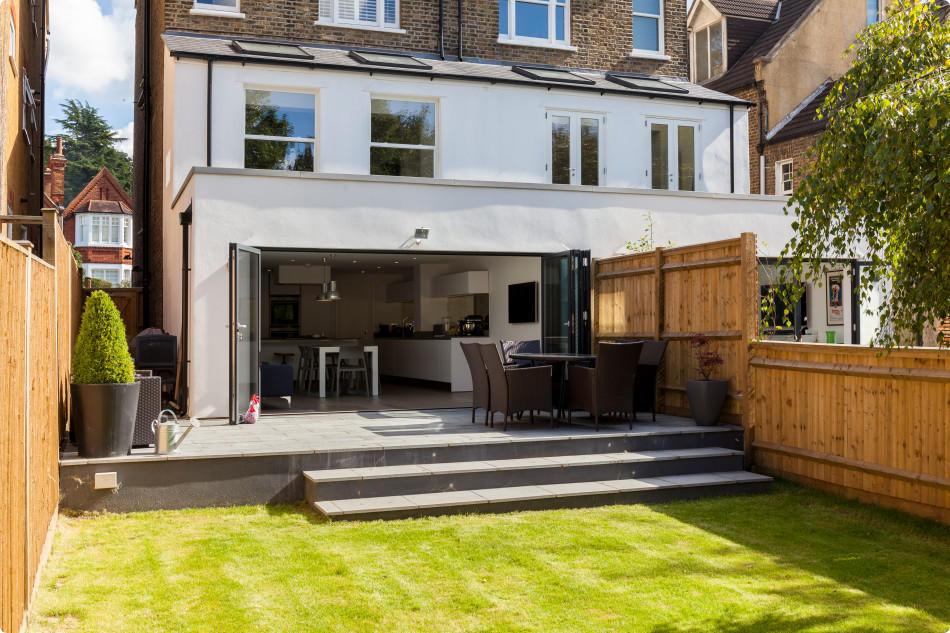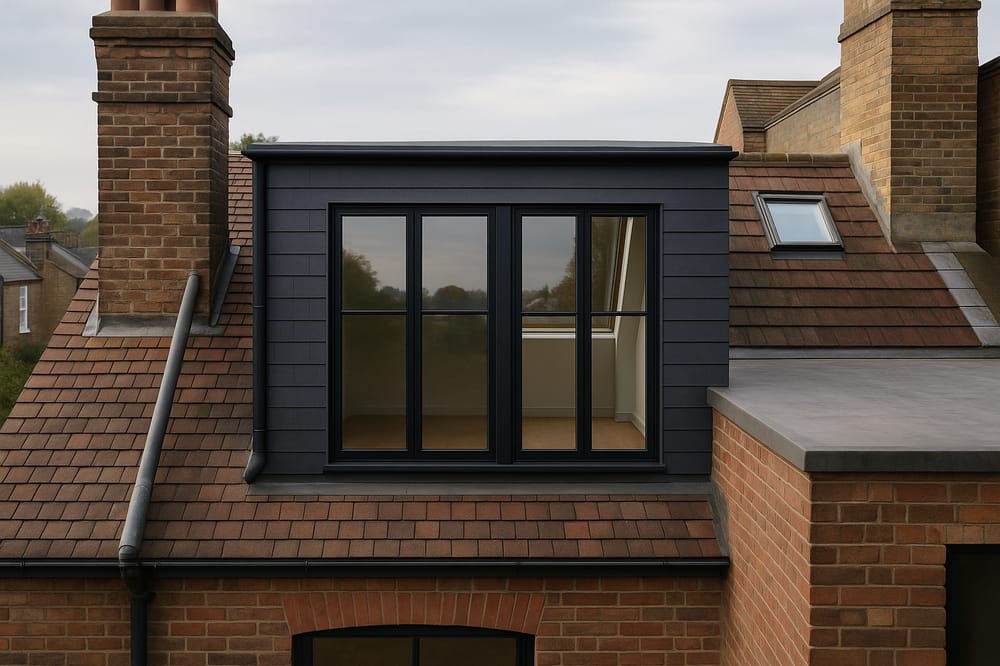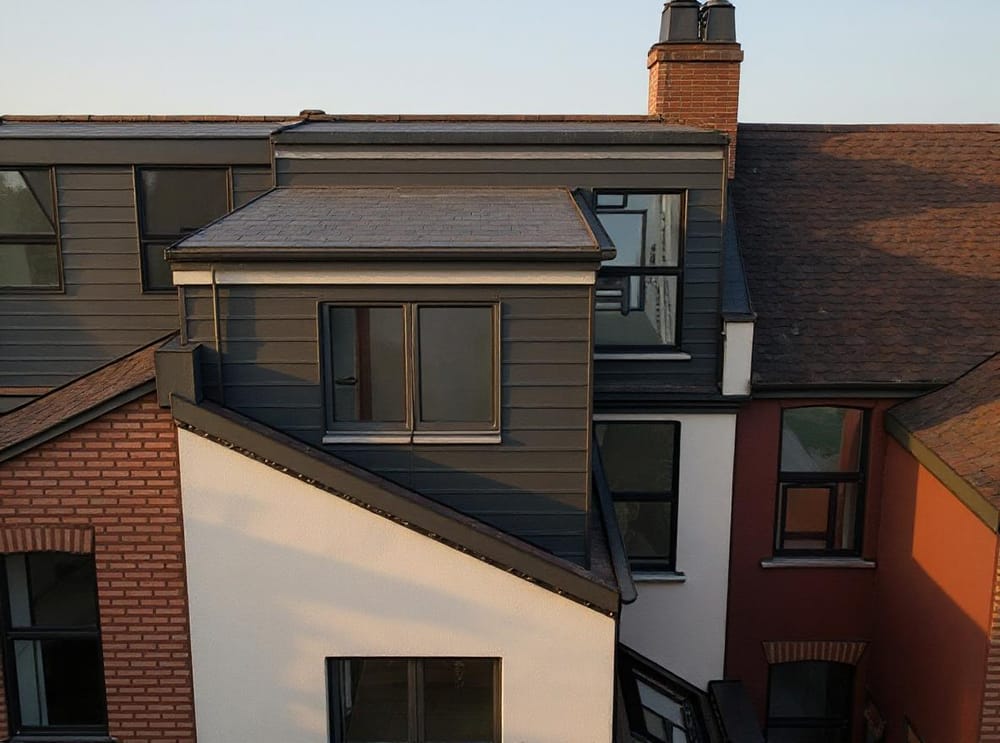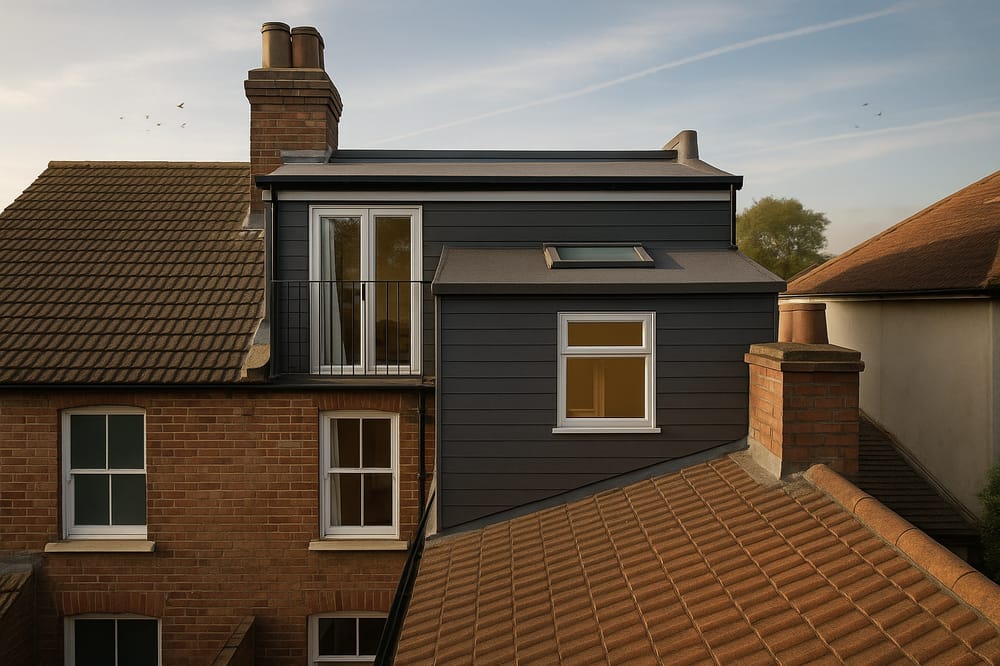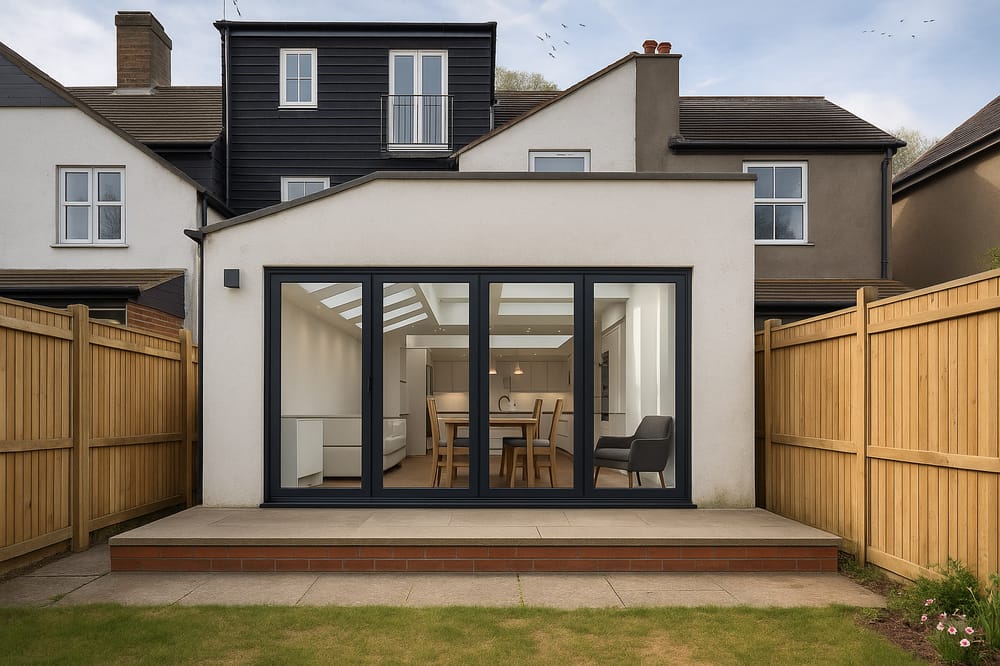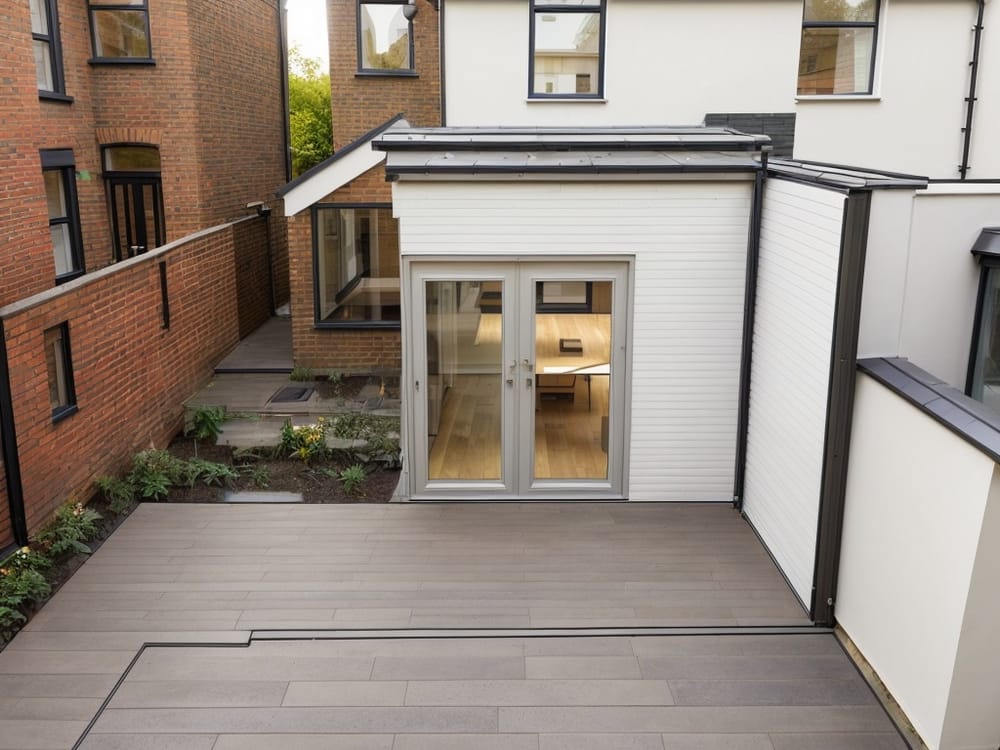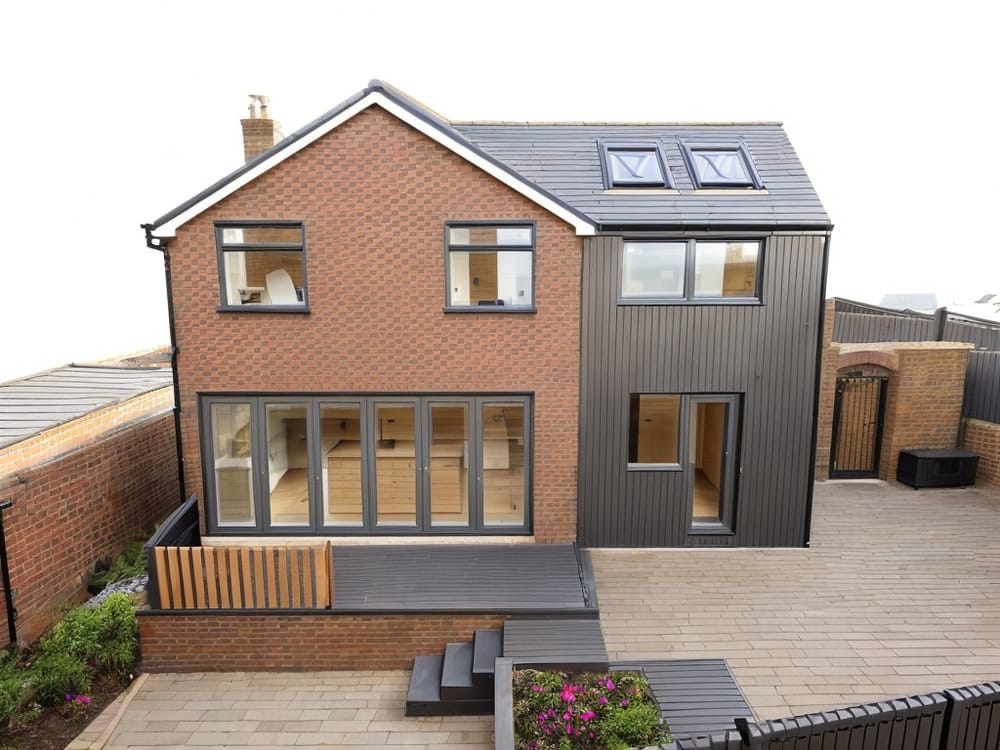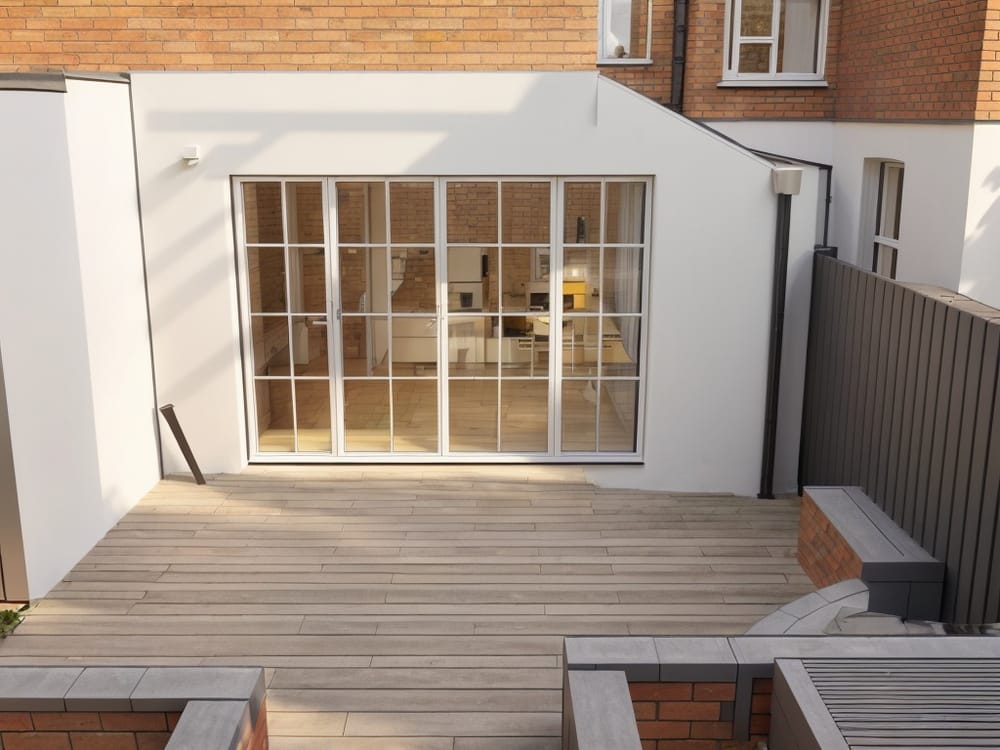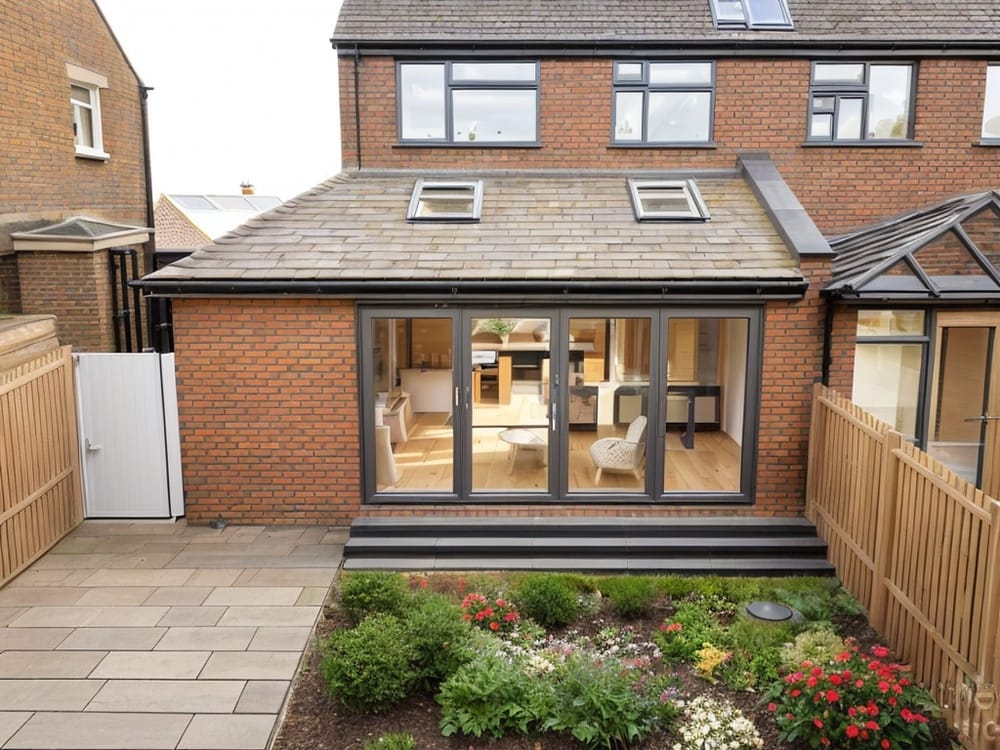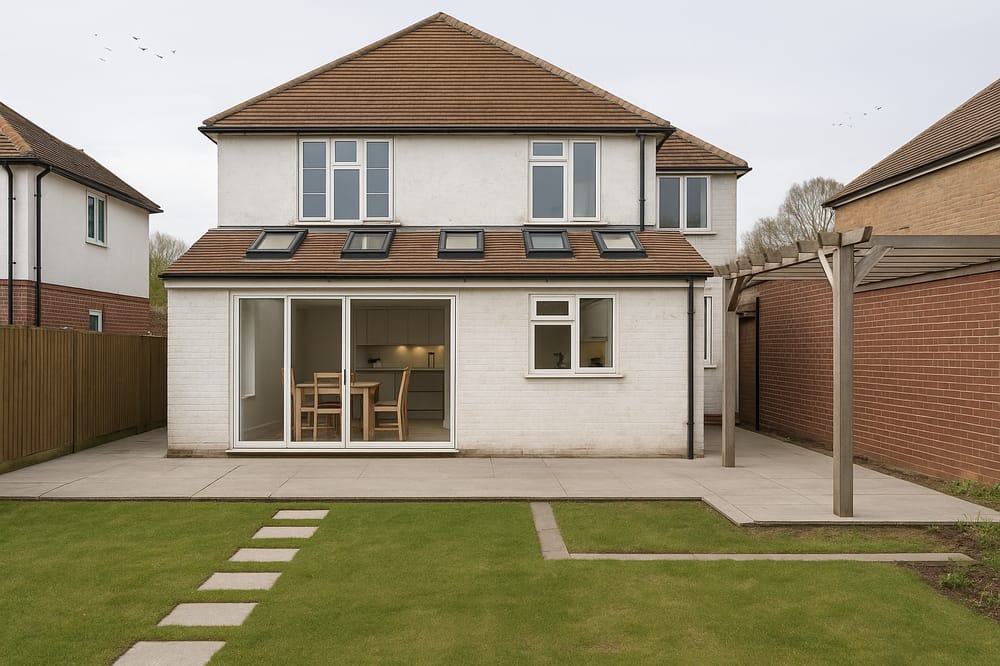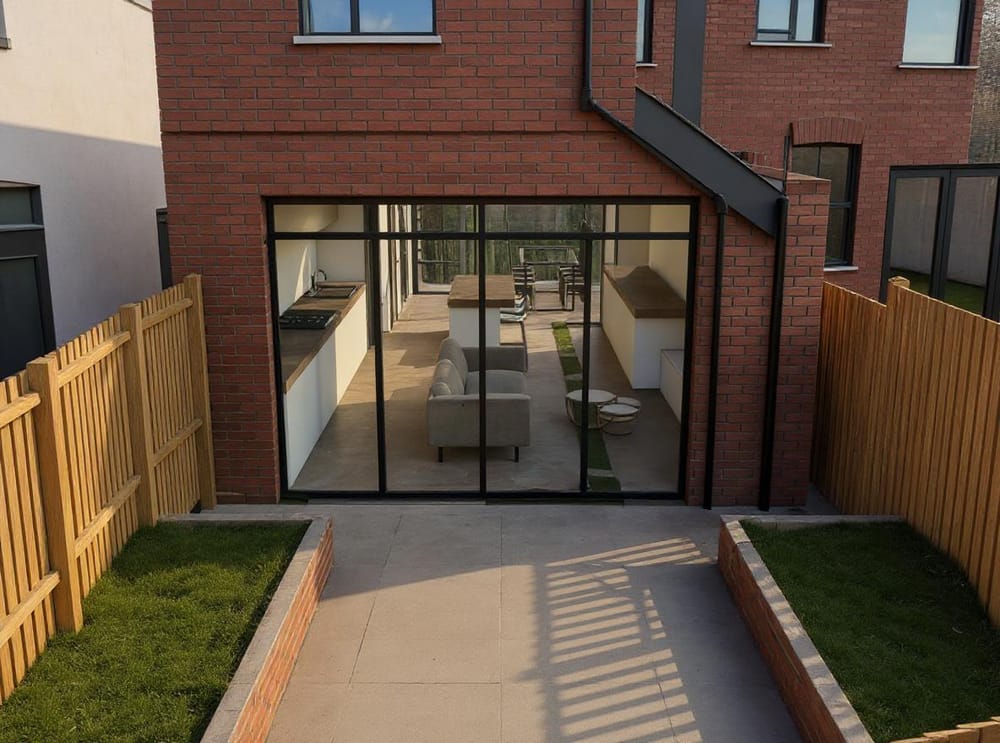If you’re someone who doesn’t like to do things by half measures, you might be considering a two-storey extension.
While they seem dramatic, there are plenty of perks to doubling up your extension. Not only do you add a very significant amount of space (which often equates to a lot of added value to your home), the comparable price of your foundations and roof means money spent per metre square is less when compared to single-storey.
However, there are some things to consider when it comes to adding a two-storey extension. Planning can be a challenge and you’ll need more work during the building regulations stage. To help navigate your way through these challenges, we asked our designers for some super-sized tips…
Double storey Vs single storey
There are pros and cons to both single and double storey extensions depending on what your existing property is like and what you’re looking to achieve. Double storey extensions will gain you significantly more extra square metres which can be transformative if you’re looking to create more space in your home. It can also offer the opportunity to reimagine the layout of your home, from open-plan spaces to extra bedrooms. The knock-on impact of this additional space is that it can increase the value of your property so, if you’re looking to sell your property in the future, you can benefit financially from the changes.
However, the downsides that come with double storey extensions are worth noting. First off, because of the huge size and scale of the project, it can be tricky to get planning permission. For some expert advice on all things planning permission from our Planning Team, don’t hesitate to book a free advice call. Assuming your planning permission is granted, you’ll want to be prepared for a significant amount of disruption and mess. So much so that it may be in your best interest to temporarily seek other accommodation, which can also hike up the (already expensive) costs. That being said, if you have the budget, time and access to alternative accommodation, the sacrifices you make in the short term could benefit you hugely in the long term.
When it comes to single storey extensions, the advantage of them over double storey extensions is that they’re cheaper and less disruptive. They still increase the square metres in your home, add value and create the opportunity for reimagining your layout – just not to the same degree.
How much does it cost to build a two-storey extension?
Before you invest any money, you first need to work out whether or not you can finance your entire project.
The main chunk of your money will be going into the build of your extension, as it not only covers the cost of materials but also the day-rates and overheads of your contractor. Prices at this stage can vary widely depending on the standard of work carried out.
Those on a tight budget can opt for a basic build, while those with more cash can go for high-quality or even premium. Where your project falls will depend on how good your contractor is, what materials you’re using and the intricacy of your design.
Construction prices:
Basic build
£1500/m2 new build areas
£800/m2 refurbished areas
Standard, high-quality build
£1650/m2 new build areas
£875/m2 refurbished areas
Premium quality build
£1800/m2 new build areas
£950/m2 refurbished areas
Not sure how these prices translate for a two-storey? If you’re looking for a more general estimate, we would put this project at around £130-150K.
Other costs to bear in mind…
- Architect fees, £1000 - 5000 or 7-15% of the final estimated build cost
- Project management, 3-7% of build costs
- Planning fees, around £200
- Measured survey, £300 - 1000
- Building regulations, £2000 - 5000
- Party Wall Agreements, if required, £700-1500
- Plus fittings and interior costs
What affects prices?
Just like a rear extension, a two-storey extension often involves the rest of the house needing work and, because of it’s size, this means redeveloping the whole home. Hence why they can be so expensive.
Other factors affect your prices…
- Location.
- Size of build.
- Complexity, anything outside the norm will require more time and expertise.
- Glazing, the more glass you use will cost more in materials and from a structural perspective.
- Team used, one-man bands will be cheaper but come with risks.
Do you need planning for a two-storey extension?
In most cases, a two-storey extension won’t be covered by permitted development rights. However, your project might be an exception if it follows these guidelines.
All projects looking to avoid needing planning permission must adhere to these permitted development rules…
- Only half the area of land around the "original house" can be covered by extensions or other buildings.
- Extensions cannot be higher than the highest part of the existing roof or higher at the eaves than the existing eaves.
- Where the extension comes within two metres of the boundary the height at the eaves cannot exceed three metres.
- An extension cannot be built forward of the ‘principal elevation’ or, where it fronts a highway, the ‘side elevation’.
- The work cannot include: verandas, balconies or raised platforms. A microwave antenna (e.g. TV aerial or satellite dish). A chimney, flue or soil and vent pipe. Any alteration to the roof of the existing house.
- The materials used in any exterior work must be of a similar appearance to those on the exterior of the existing house.
On top of this, here are the rules specific to two-storey extensions…
- Extensions of more than one storey must not extend beyond the rear wall of the “original house” by more than three metres or be within seven metres of any boundary opposite the rear wall of the house.
- Roof pitch must match the existing house as far as practicable, including any upper storey built on an existing extension.
- Any upper-floor window located in a ‘side elevation’ must be obscure-glazed; and non-opening (unless the openable part is more than 1.7 metres above the floor).
Your project will also be excluded from permitted development if…
- You want to create a two-storey extension at the side of your home.
- You live on designated ground, such as a conservation area or an area of outstanding natural beauty.
If your project can’t use permitted development rights then you’ll need to make a full planning application. In order to give your home the best chance of first-time success, we recommend having an architect handle your application.
Two-storey extensions and building regulations
All extension projects are required by law to comply with UK building regulations.
These cover…
- Structure
- Fire safety
- Site preparation
- Resistance to contaminants and moisture
- Toxic substances
- Soundproofing
- Ventilation
- Hygiene
- Waste disposal
- Conservation of fuel and power
- Access
- Glazing
- Electrical safety
To make sure your home is not only legal but safe, we recommend putting together a building regulations package for your builder to work off.
Because of the scope of work involved, you’ll often need to hire several specialists to help cover all the bases. This could include an architectural technician, structural engineer, drainage surveyor, and (if you have an affected neighbour) a party wall surveyor.
Learn more about Building Regulations.
Want to learn more about unlocking your home’s potential? Book in a free consultation for bespoke advice from our experts. We can provide guidance on everything from budgets, design, finance, timelines, and much more. Book yours here.
